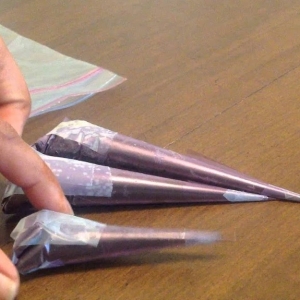The flame photometer is useful for conducting quantitative as well as qualitative analyses of various elements. Radiations of a certain kind are emitted by the flame photometer, and each one is specific to a different metal. Therefore, with the assistance of the Flame photometer, we are able to determine whether or not a particular element is present in the sample that has been provided.
It is essential for the health of the soil that certain group II elements be present. We are able to determine the presence of a wide variety of alkali and alkaline earth metals in a soil sample by performing a flame test, and after that, we are able to provide the soil with the appropriate fertilizer.
Within the human body, the concentrations of the ions Na+ and K+ are extremely significant for the execution of a wide variety of metabolic functions. Their concentrations can be calculated by first diluting a blood serum sample, then aspirating the diluted sample into a flame.
Flame photometry is another method that can be used to analyze beverages such as carbonated drinks, fruit juices, and alcoholic beverages to determine the concentrations of a number of different metals and elements.
The benefits of using a flame photometer
The method of analysis is very straightforward and efficient in its use of resources.
It is a rapid analysis that is also convenient, selective, and sensitive.
The nature of it is one that is qualitative as well as quantitative.
It is possible to determine the concentration of metals in the sample, even if they are present in extremely minute amounts (in the range of parts per million to parts per billion).
This method accounts for the presence of any unforeseen interfering material in the sample solution and compensates for its effects.
You can use this method to make estimates for components that are only infrequently analyzed.
The flame photometer has a number of drawbacks.
This method of analysis, despite having many benefits, has quite a few drawbacks, including the following:
It is not possible to obtain an accurate measurement of the concentration of the metal ion in the solution.
It is not able to detect and determine the presence of inert gases in a direct manner.
This method may measure the total amount of metal in the sample, but it does not provide any information about the atomic or molecular structure of the metal that is in the sample.
The use of only liquid samples is permitted. In certain circumstances, the preparation of samples can also take a long time.
The direct determination of each and every metal atom cannot be accomplished through the use of flame photometry. This method is not suitable for the analysis of a number of different metal atoms. Due to the fact that they do not emit any radiation, non-radioactive elements like carbon, hydrogen, and halides cannot be found.
Flame emissionSpectrophotometry is based on the characteristic emission of light by the atoms of many metallic elements when given sufficient energy, such as that which is supplied by a hot flame. This allows for the measurement of a wide range of elements. The selection of a line with sufficient intensity to provide adequate sensitivity and freedom from other interfering lines at or near the selected wavelength determines the wavelength that will be used for the measurement of an element. This determination is made based on the selected wavelength. In a flame, lithium produces a red color, sodium produces a yellow color, potassium produces a violet color, rubidium produces a red color, and magnesium produces a blue color. The metal atoms that are present in the solution as cations have these colors because they are characteristic of them. The light intensity of the characteristic wavelength that is produced by each of the atoms is directly proportional, under conditions that are both constant and controlled, to the number of atoms that are emitting energy, which is directly proportional to the concentration of the substance of interest in the sample. This relationship holds true only when the conditions are constant and controlled. This method, which was once utilized for the analysis of sodium, potassium, and lithium found in body fluids, has largely been superseded by electrochemical methods in recent years.
Atomization and excitation can be accomplished in spectrochemical analysis by utilizing a wide variety of emission sources in a variety of configurations. Although the temperatures of flames and furnaces (2000–4000 K) are not high enough to adequately excite many of the elements, the spectra that are derived from low-energy sources such as flames are simpler than those that are derived from electrical discharges. Despite this, flame emission spectrometry is widely used for the determination of alkali elements such as lithium, sodium, and potassium. This is because the alkali elements' excitation states are sufficiently low that they can be populated at flame temperatures. Sources with a greater amount of energy produce temperatures that are higher and, as a result, more emission lines. Electrical discharges involve applying currents and potentials across conducting electrodes in order to create arcs and sparks. As a result of this process, a significant amount of the sample surface is evaporated. Plasma sources, such as the inductively coupled plasma (ICP), direct current plasma (DCP), and microwave induced plasma (MIP), which generally achieve temperatures of 7000–8000 K, allow for improved quantitative analysis. In the process of analyzing metals, glow discharge sources are frequently utilized. These sources employ high-energy argon atoms and ions to excite atoms that have been ejected from the surface of the analyte.
The Boltzmann distribution equation can be used to give a description of the degree of excitation that is caused by a thermal source. The formula for calculating the excited fraction is as follows: where N1 is the number of atoms in the excited state and N0 is the number of atoms in the ground state.
where E represents the difference in energy level between the ground state and the excited state, T represents the absolute temperature in kelvins, k represents the Boltzmann constant, which is equal to 1.38 x 1023 joules per kelvin, and g1 and g0 are quantum statistical weighting factors.
menu
menu
Menu







